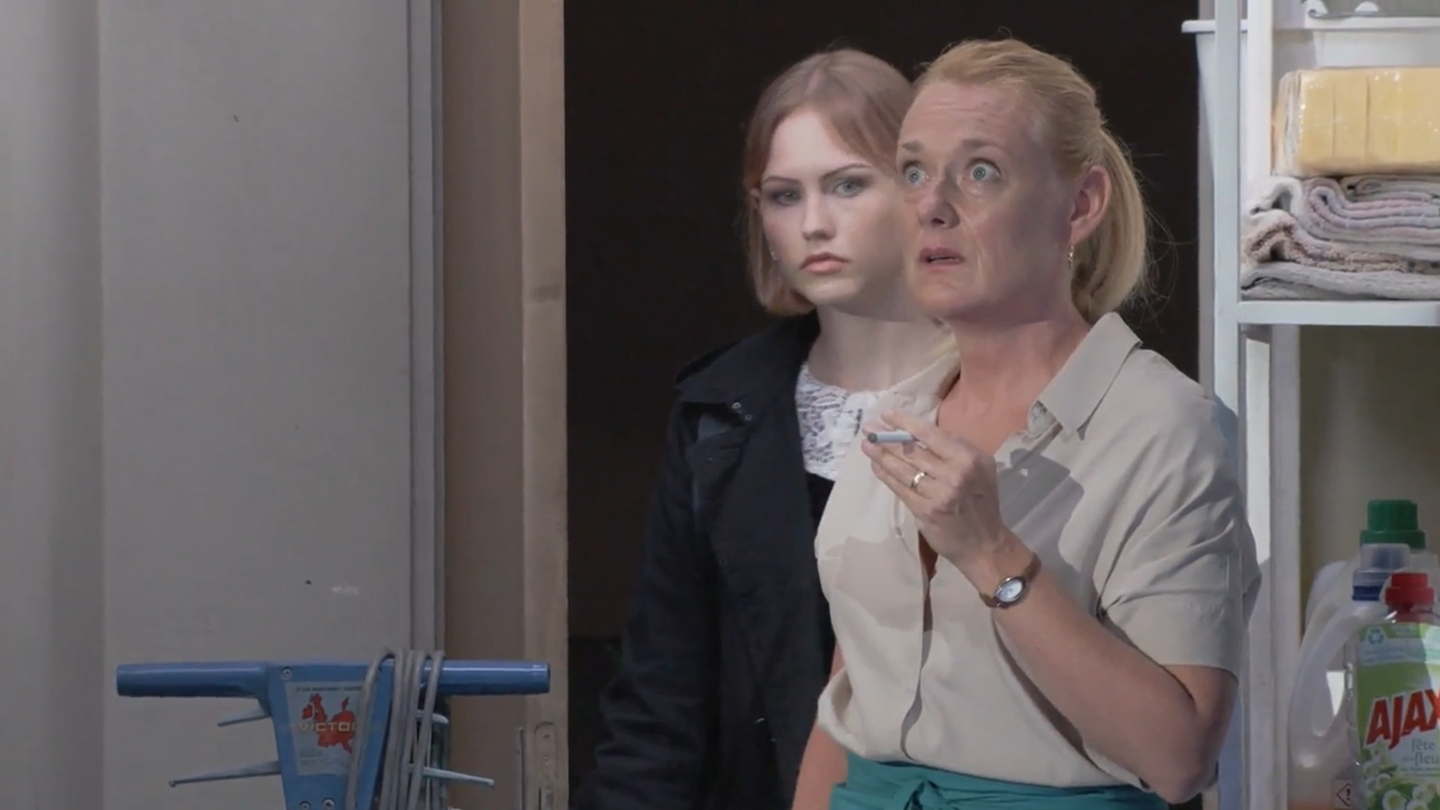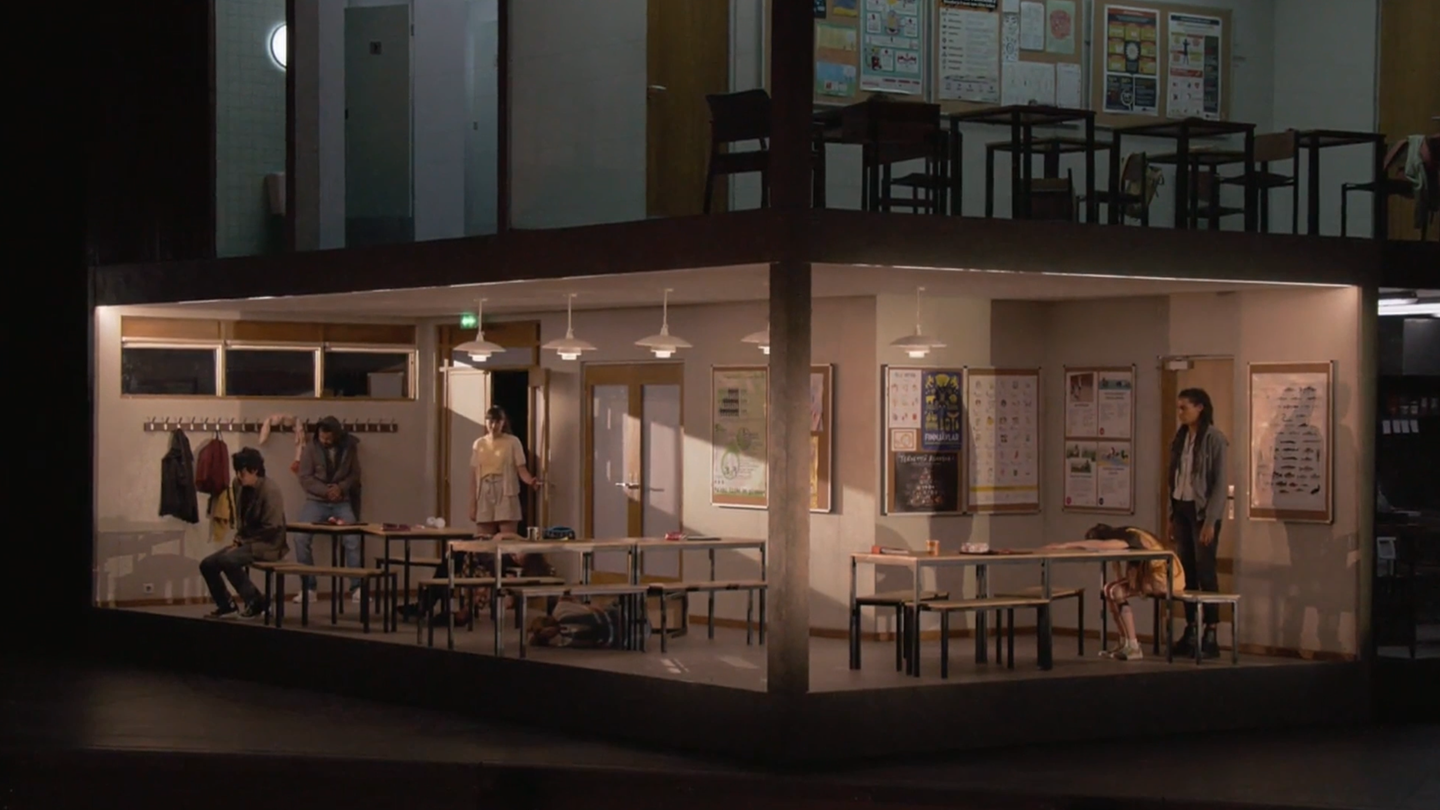Backstage with Matthew:
Anticipating Innocence
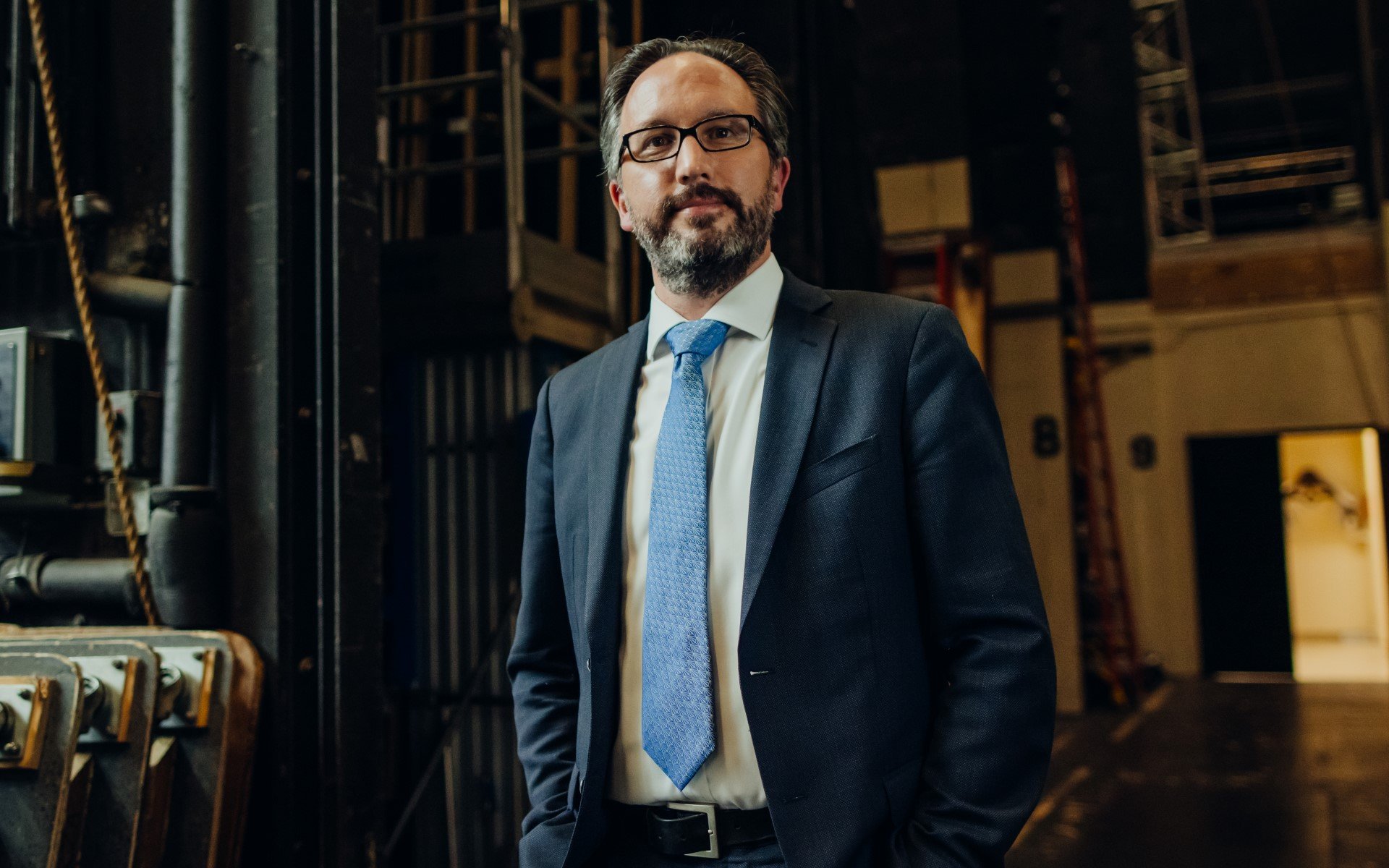
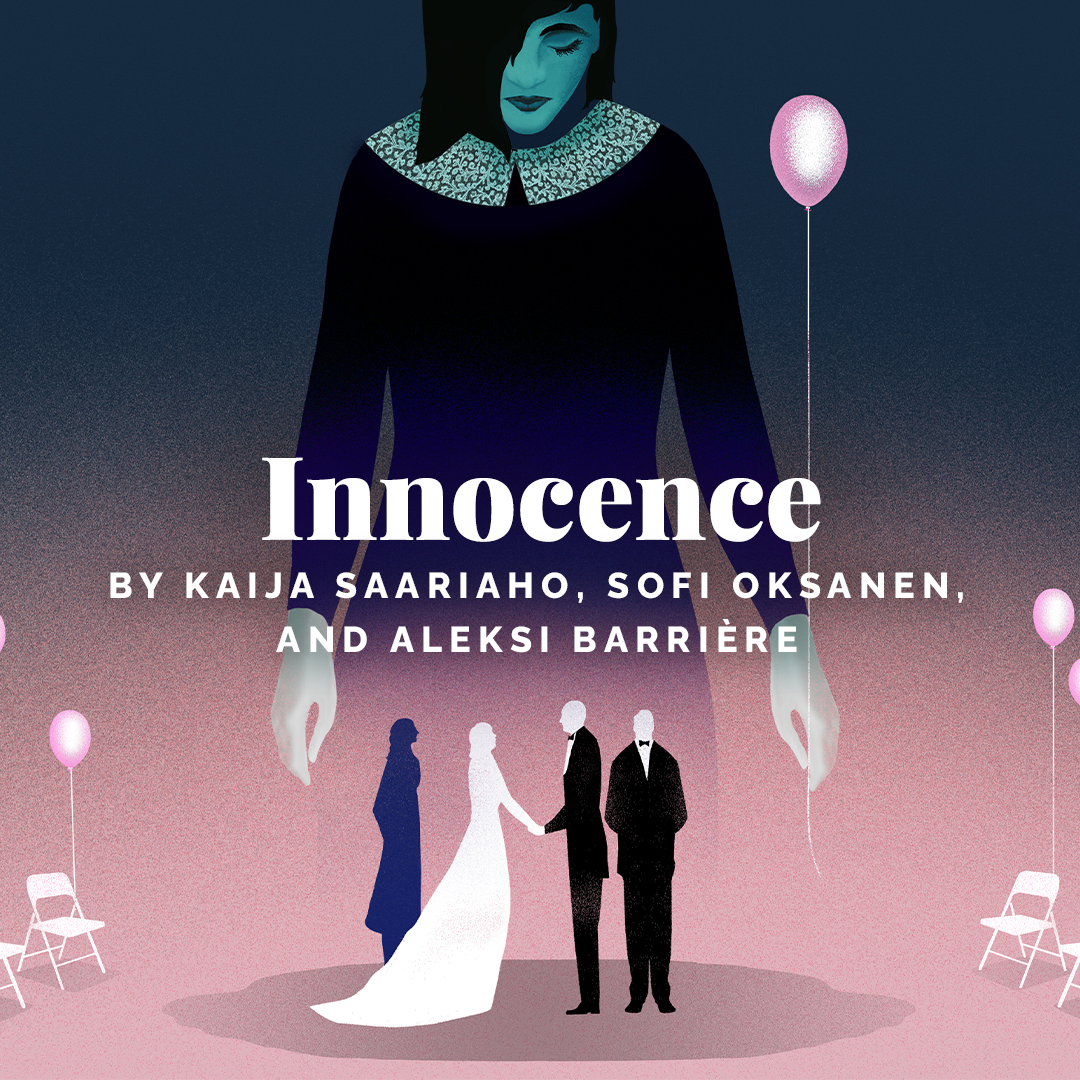 Illustration by Brian Stauffer
Illustration by Brian Stauffer
Our association with Innocence goes back almost nine years. In the fall of 2015, I had just been named general director and had the chance to have dinner with Kaija and her husband, Jean-Baptiste Barrière, before the final performance of Wagner’s Die Meistersinger. Kaija had been in residence at Ojai at Berkeley, and I was thrilled that we could meet before she returned to Europe. Over dinner, I asked her what she was working on, and she told me that she was just beginning to write a piece about two mothers and their response to a deeply traumatic moment. At that point it was called The Uninvited Guest, and I was so deeply moved by her explanation of the piece, that I knew we had to bring it to San Francisco.
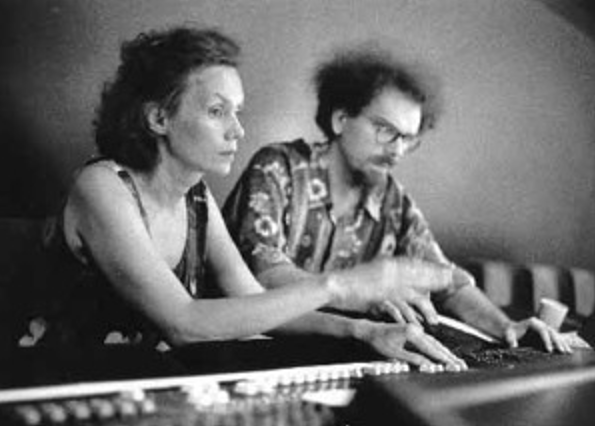 Kaija Saariaho and husband Jean Baptiste Barrière in 1997, both composers affiliated with the IRCAM institute at the Pompidou Centre in Paris.
Kaija Saariaho and husband Jean Baptiste Barrière in 1997, both composers affiliated with the IRCAM institute at the Pompidou Centre in Paris.
As with so many great operas, the subject matter takes us to the extremes of human experience, allowing us all to find our own reflections within it. The opera takes place at a wedding reception in Finland. We come to learn that the groom’s brother committed a mass shooting at an international school in Helsinki ten years prior, but the groom and his parents have kept this terrible family secret from his new bride as they all try and build a new life. A waitress at the wedding reception recognizes with horror the family–she is the mother of one of the children killed in the shooting. In a taut, cinematic, 100-minute unfolding, the truth gradually emerges, but it is not nearly as simple a truth as we initially believe. Our understanding of who is innocent and who is guilty keeps shifting, pulling us deeper and deeper into the very real complexity of trauma.
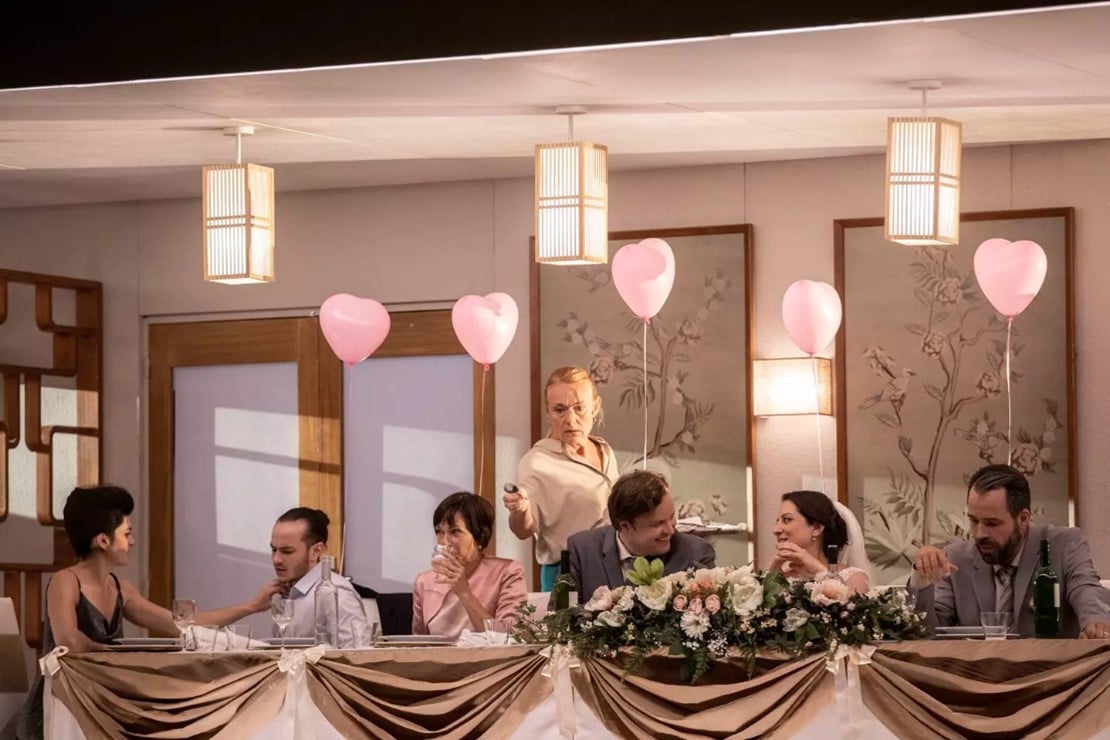
The inspiration for the work may be surprising. It was Da Vinci’s fresco The Last Supper. Kaija was fascinated speculating about the mindset of each of the 13 people around the table–a group brought together in a moment of deep emotional impact, but each bringing their own perspective, history and reality. Kaija, along with her librettist Sofi Oksanen and her son and dramaturg/translator Aleksi Barrière, developed a contemporary framework for 13 people brought together in complex trauma. What resulted is a work in which we, the audience, are invited into a subject as painful as gun violence in a way not possible in any other medium.
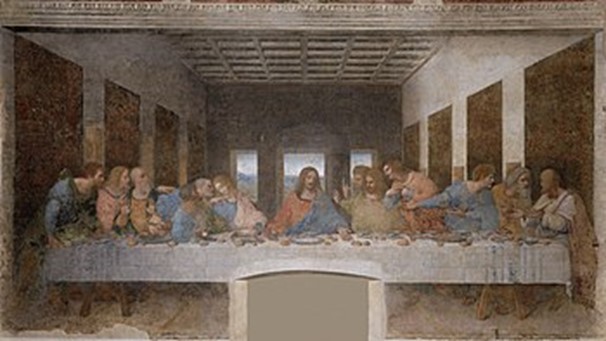
To me, that is one of the geniuses of Innocence. We see aspects of gun violence, so painfully prevalent in our world, from many perspectives. How the tragedy has ripped apart friendships, families, professions; how it remains an inescapable truth for those who witnessed it; how people try and find hope against all odds. There is one moment that I find particularly impactful – when the waitress confronts the mother of the shooter and says, “we used to bake cakes together.” It is a hard-hitting truth that the families of the perpetrator and the victim in a school shooting could have been close friends.
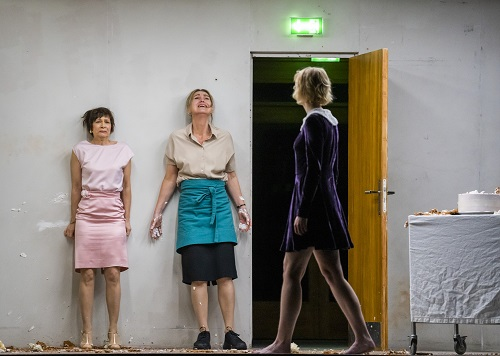 The moment the waitress confronts the mother of the shooter at the wedding reception (photo by Tristram Kenton)
The moment the waitress confronts the mother of the shooter at the wedding reception (photo by Tristram Kenton)
It was very important to the creators of the work that the characters have their own unique worlds and perspectives. The opera is written in nine languages, both sung and spoken, and each character has a distinctive set of musical and dramatic attributes–each navigating their own world as part of a broader community. In addition to returning artists like Kristinn Sigmundsson, Rod Gilfry and Ruxandra Donose, we will be welcoming many new artists, some of whom originated the production in 2021. One of the new artists is Finnish multi-disciplinary artist Vilma Jää who plays Markéta, the slain daughter of the waitress. Vilma has the most transfixing, stratospheric voice and technique, and she takes us into a completely different world with her artistry. You can see her talking about her singing technique here and can hear her newly released folk pop album here.
 Innocence artist Vilma Jää
Innocence artist Vilma Jää
Kaija’s music is extraordinary, and it encapsulates such an all-encompassing knowledge of sounds, harmonies and textures. Kaija very sadly passed away last June, tragically too soon. Innocence became her final opera and a testament to her stature as one of the greatest composers of our time. The closest thing we have had to her music on our stage was the American premiere of Messiaen’s Saint François d’Assise in 2002. There are a few composers through history who have had the ability to almost bend time through their music. I put Wagner, Messiaen and Saariaho into that group. Kaija was a “spectralist” composer, meaning that her music grows organically out of the very building blocks of sound–tones and overtones represented mathematically. It is almost as if the music is growing out of itself, creating something very natural and purposeful. Kaija uses that to paint extremes of sound and psychology, from the atmospheric and ethereal to a gut-punch intensity, sometimes in a matter of seconds. As Innocence comes to a conclusion, the music expands gradually outwards to the lowest and highest notes possible in the orchestra, as we move into a plane of openness and transcendence. It’s incredible.
This clip from the Prelude of Innocence will give you a sense of how quickly Kaija can move from one extreme to the other:
You can also get a sense of the opera in this trailer from Aix-en-Provence.
The physical production is by Australian director Simon Stone, one of the most in-demand opera, theater and film directors at the moment. He has created a cinematic world on a rotating cube (designed by Chloe Lamford who has also designed our Handmaid’s Tale this fall). The visual world, just like the music, is always moving as we journey through the intensity of this story. As the cube turns, the rooms morph from wedding reception to classroom, as we move through the psychological states of the 13 characters. There is an extraordinary fluidity to Innocence that keeps us in a state of heightened awareness and unfolding reality. You can get a sense of the how the set works through the eyes of the bride in Innocence, Lilian Farahani, in this video from our friends at the Dutch National Opera.
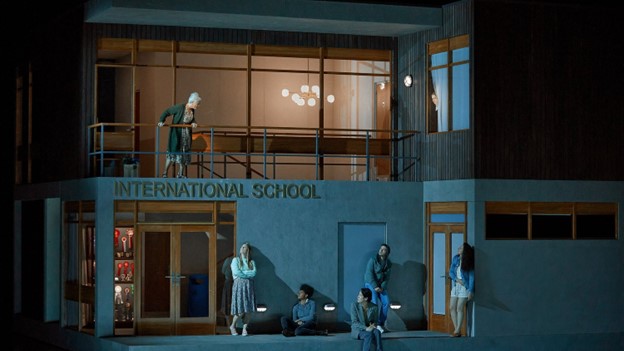 The rotating set
The rotating set
The arc of the piece was incredibly important to Kaija and she knew that audiences would not be able to hold this subject matter for more than about 100 minutes, hence it being without intermission. In one of the most disciplined, intentional operatic structures I have ever seen crafted, Kaija laid out the entirety of Innocence in a structural blueprint before writing a note, laying out every scene minute by minute to ensure that the work propels forward in exactly the right way. She deleted measures as she went, determined that the piece not be a hair longer than it should be. I have never seen that degree of structural rigor before.
You can listen to an interview I did with Kaija back in February 2023, one of the last interviews she gave before she passed away.
Because we joined the work early on as one of the five co-commissioners (it premiered in Aix-en-Provence in 2021 and then went to London, Helsinki and Amsterdam before coming to San Francisco for its American premiere), we were actively involved as the work came to life. I had the incredible privilege of visiting with Kaija a few times in Paris while she was writing Innocence and she shared with me the sketches, the blueprints, and her inspirations for the work.
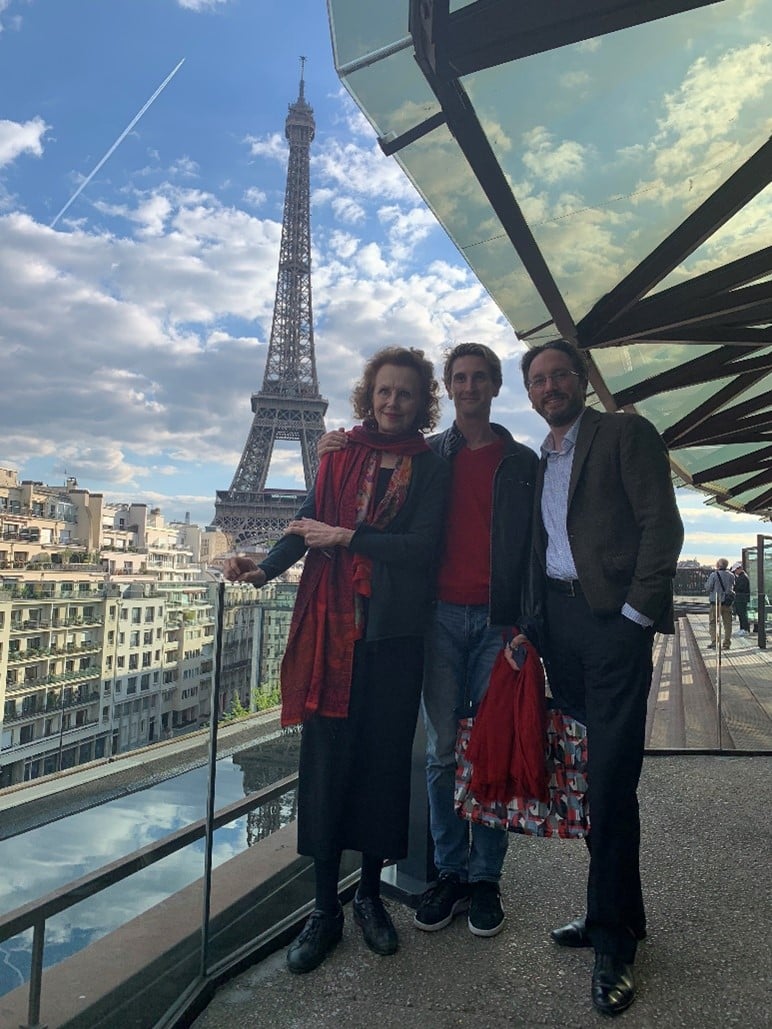
Matthew with Kaija Saariaho and Innocence conductor Clément Mao-Takacs
While it is heartbreaking for all of us involved that Kaija will not be able to be with us in person for the American premiere of Innocence, I take some comfort in knowing that she was able to experience some of the music in the War Memorial Opera House. In fact, it was the very first time in the world that any of the music was heard orchestrally. The creative team (director and designers) wanted to know the sound world of Innocence as they created the visual world. In many cases digital sound files can be shared as a proxy for the real thing, but Kaija was understandably adamant that her music could only be experienced with a live orchestra given the nuances of texture and instrumentation with which she painted her music. We happened to have a few orchestra services available in the fall of 2018, and so we offered to do a reading. Kaija flew to San Francisco along with Clément Mao-Takacs who will be conducting the piece here, and they worked with the orchestra, bringing her transcendent music to life for the very first time. It was an amazing moment for us all, but even more so now, recognizing how poignant it was in hindsight that she got to hear Innocence here before she passed.
I would like to share with you two clips from Innocence to give you a sense of the power of the work, courtesy of our friends at the Festival d’Aix-en-Provence. The first is an interaction between the Waitress, Tereza, and her daughter, Markéta, in which you can see how Kaija incorporates Vilma’s unique vocalisms. The second gives you a sense of how Kaija writes for the spoken lines of the students, each speaking a different language, and each embodying a different sensibility. In this clip they are reflecting on how they are treated like a “monument” by the press and public immediately after the shooting, and then how that all disappears until the next school shooting when the press thrust them back into the brutal memory of what happened
Innocence is a work that touches on issues so present in the world around us, not only in themes around gun violence, but also around bullying, the impacts of trauma, social media, and many others. Given the many associations that exist with Innocence, we are developing a series of programs around the opera, working with a number of community partners: Giffords, Live Free USA, the Community Arts Stabilization Trust, Collective Impact, and UCSF’s San Francisco Wraparound Project . We are undertaking trainings across the company to prepare everyone working on Innocence with tools and strategies to navigate the challenging subject matter. We will also be hosting a symposium on May 31 in the Taube Atrium Theater, and will be inviting patrons to pre- and post-show events in the theater around every performance, providing opportunities for discussion, meditation, and reflection. Please visit sfopera.com/innocence for more information as it becomes available.
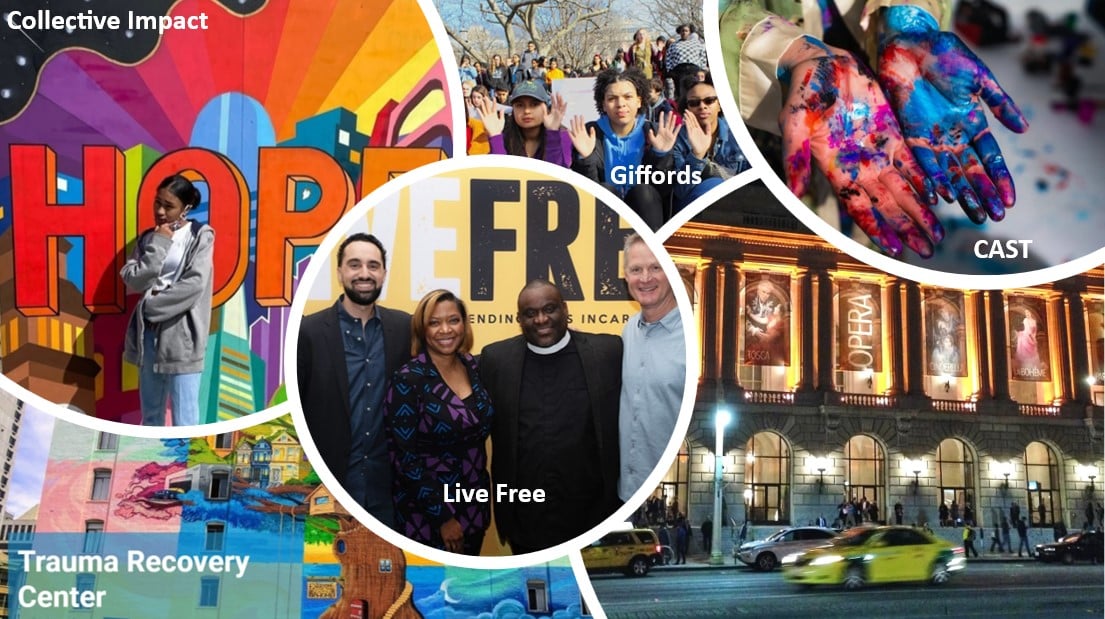
San Francisco Opera’s community partners for Innocence
There are moments on the opera stage that stay with one for all time, such is the intensity of the emotional experience. For me, Innocence has been one of those moments and I cannot wait to share it with you. It is a piece that resonates powerfully for long-time opera goers and brand-new opera goers alike – it is a complete immersion into a topic that is sadly far too prevalent in our world, but in a way that gives us a different entry point into understanding the many facets and implications of this extreme trauma. Co-commissioning works like Innocence defines San Francisco Opera’s continued commitment to the most important new works, as we have done throughout our history. It is going to be a major moment for us all in just a few months’ time and one I that I encourage you to be a part of.



